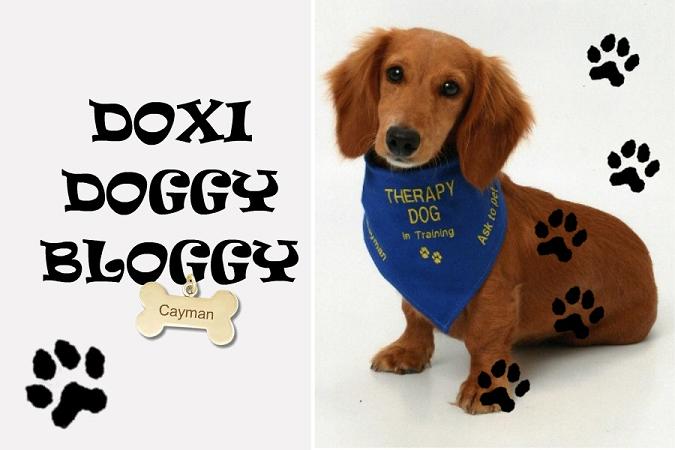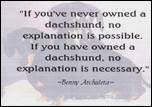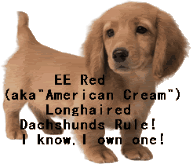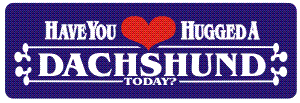CGC is a certification program that is designed to reward dogs who have good manners at home and in the community. The Canine Good Citizen Program is a two-part program that stresses responsible pet ownership for owners and basic good manners for dogs. All dogs who pass the 10-step CGC test may receive a certificate from the American Kennel Club.
Many dog owners choose Canine Good Citizen training as the first step in training their dogs. The Canine Good Citizen Program lays the foundation for other AKC activities such as obedience, agility, tracking, and performance events. As you work with your dog to teach the CGC skills, you'll discover the many benefits and joys of training your dog. Training will enhance the bond between you and your dog. Dogs who have a solid obedience education are a joy to live with-they respond well to household routines, have good manners in the presence of people and other dogs, and they fully enjoy the company of the owner who took the time to provide training, intellectual stimulation, and a high quality life.
AKC's Canine Good Citizen® (CGC) Program is one of the most rapidly growing programs in the American Kennel Club. There are many exciting applications of this wonderful, entry level that go beyond the testing and certifying of dogs.
Many other countries (including England, Australia, Japan, Hungary, Denmark, Sweden, Canada, and Finland) have developed CGC programs based on the AKC's CGC Program. A CGC Neighborhood Model has been established, police and animal control agencies use CGC for dealing with dog problems in communities, some therapy dog groups use the CGC as a partial screening tool, and some 4-H groups around the country have been using the CGC as a beginning dog training program for children.
A number of specialty (one breed only) clubs give the CGC at their annual national dog show. Dog clubs have discovered that the CGC is an event that allows everyone to go home a winner. Veterinarians have recognized the benefits of well-trained dogs and there are some CGC programs in place in veterinary hospitals. State legislatures began recognizing the CGC program as a means of advocating responsible dog ownership and 34 states now have Canine Good Citizen resolutions.
In a little over one decade, the Canine Good Citizen Program has begun to have an extremely positive impact in many of our communities. This is a program that can help us assure that the dogs we love will always be welcomed and well-respected members of our communities.
AKC's Canine Good Citizen® (CGC) Program is one of the most rapidly growing programs in the American Kennel Club. There are many exciting applications of this wonderful, entry level that go beyond the testing and certifying of dogs.
Many other countries (including England, Australia, Japan, Hungary, Denmark, Sweden, Canada, and Finland) have developed CGC programs based on the AKC's CGC Program. A CGC Neighborhood Model has been established, police and animal control agencies use CGC for dealing with dog problems in communities, some therapy dog groups use the CGC as a partial screening tool, and some 4-H groups around the country have been using the CGC as a beginning dog training program for children.
A number of specialty (one breed only) clubs give the CGC at their annual national dog show. Dog clubs have discovered that the CGC is an event that allows everyone to go home a winner. Veterinarians have recognized the benefits of well-trained dogs and there are some CGC programs in place in veterinary hospitals. State legislatures began recognizing the CGC program as a means of advocating responsible dog ownership and 34 states now have Canine Good Citizen resolutions.
All dogs, including both purebred and mixed breed dogs are welcome to participate in the AKC's Canine Good Citizen® (CGC) Program. Dogs must be old enough to have received necessary immunizations such as rabies vaccines. Owners will sign the Responsible Dog Owners Pledge attesting to having the dog under the routine care of a veterinarian who will work with the owner to determine an appropriate plan and schedule for vaccines and other health care procedures.
There is no age limit for the CGC test. A dog is never too old to be a good citizen. Puppies who have completed all immunizations and boosters may be tested, however, because we know that behavior and temperament can change over time, when puppies pass the CGC test, owners should have them re-tested as adults.
There are a few exceptions relating to participation in a CGC test. If the CGC test is given at an AKC show, the age requirements for the show apply to CGC also. Further, when the CGC test is administered at an AKC show, the test may be restricted to only dogs entered in the show or to purebred dogs.
Some dogs who are entered in CGC tests will have completed CGC classes or basic obedience classes. Owners who have trained their dogs themselves may also have their dogs tested. Clubs and training programs in almost every city can provide CGC training to owners and dogs who need to learn a few more skills before taking the test.
Many dog owners complete CGC training and testing as a prerequisite to therapy dog certification. While the AKC does not certify therapy dogs, we are very proud that so many CGC dogs and their owners volunteer their time to improve the lives of other people. There are national therapy dog groups (and in some cities local groups) that certify therapy dogs. Therapy Dogs International (TDI) uses the AKC Canine Good Citizen test as a key component of its therapy dog assessment. TDI can be reached at www.tdi-dog.org
Testing Requirements
* TDI Requirements are displayed in italics
This test demonstrates that the dog will allow a friendly stranger to approach it and speak to the handler in a natural, everyday situation. The Evaluator and handler shake hands and exchange pleasantries. The dog must show no sign of resentment or shyness, and must not break position or try to go to the Evaluator.
The dog must be tested around medical equipment (such as a wheelchair, crutches, cane, walker, or other devices which would ordinarily be found in a facility) to judge the dog’s reactions to common health care equipment. At the discretion of the Evaluator, this part of the test may be included in any of the following tests: 2,3,5 or 9
Test 2: Sitting Politely for Petting
This test demonstrates that the dog will allow a friendly stranger to touch it while it is out with its handler. The dog should sit at the handler’s side as the Evaluator approaches and begins to pet the dog on the head and body only. The dog may stand in place to accept petting. The dog must not show shyness or resentment.
Test 3: Appearance and Grooming
This practical test demonstrates that the dog will welcome being groomed and examined and will permit a stranger, such as a veterinarian, groomer or friend of the owner, to do so. It also demonstrates the owner’s care, concern and sense of responsibility. The Evaluator inspects the dog, then combs or brushes the dog, and lightly examines the ears and each front foot.
Test 4: Out For a Walk
(Walking on a Loose Leash)
This test demonstrates that the handler is in control of the dog. The dog can be on either side of the handler, whichever the handler prefers. There must be a left turn, a right turn and an about turn, with at least one stop in between and another at the end. The dog need not be perfectly aligned with the handler and need not sit when the handler stops.
Test 5: Walking Through a Crowd
This test demonstrates that the dog can move about politely in pedestrian traffic and is under control in public places. The dog and handler walk around and pass close to several people (at least three). The dog may show some interest in the strangers, without appearing overexuberant, shy or resentful. The handler may talk to the dog and encourage or praise the dog throughout the test. The dog should not be straining at the leash.
Test 6: Sit and Down on Command/Staying in Place
This test demonstrates that the dog has training, will respond to the handler’s command to sit and down, and will remain in the place commanded by the handler (sit or down position, whichever the handler prefers). The handler may take a reasonable amount of time and use more than one command to make the dog sit and then down. When instructed by the Evaluator, the handler tells the dog to stay and walks forward the length of a 20-foot line. The dog must remain in place, but may change positions.
Test 7: Coming when Called
This test demonstrates that the dog will come when called by the handler. The handler will walk 10 feet from the dog, turn to face the dog, and call the dog. The handler may use encouragement to get the dog to come. Handlers may choose to tell the dog to “stay” or “wait,” or they may simply walk away, giving no instructions to the dog as the Evaluator provides mild distraction (e.g., petting).
Test 8: Reaction to Another Dog
This test demonstrates that the dog can behave politely around other dogs. Two handlers and their dogs approach each other from a distance of about 10 yards, stop, shake hands and exchange pleasantries, and continue on for about 5 yards. The dogs should show no more than a casual interest in each other.
Test 9: Reactions to Distractions
This test demonstrates that the dog is confident at all times when faced with common distracting situations, such as the dropping of a large book or a jogger running in front of the dog. The dog may express a natural interest and curiosity and/or appear slightly startled, but should not panic, try to run away, show aggressiveness or bark.
Leave-It: The handler with the dog on a loose leash walks past food on the ground (placed within a distance of three feet) and, upon command, the dog should ignore the food. (Please note: TDI does not permit the use of food/treats during actual therapy dog visits.)
Acclimation to Infirmities: This test demonstrates the dog’s confidence when exposed to people walking with an uneven gait, shuffling, breathing heavily, coughing, wheezing or other distractions which may be encountered in a facility.
Test 10: Supervised Separation
This test demonstrates that a dog can be left with a trusted person, if necessary, and will maintain its training and good manners. Evaluators are encouraged to say something like, “Would you like me to watch your dog?” and then take hold of the dog’s leash. The owner will go out of sight for three minutes. The dog does not have to stay in position but should not continually bark, whine, or pace unnecessarily, or show anything stronger than mild agitation or nervousness.
Test 11: Say Hello
The TDI Certified Evaluator will test the willingness of each dog to visit a person and that the dog can be made readily accessible for petting (i.e., small dogs can be placed on a person’s lap or can be held, medium and larger dogs can sit on a chair or stand close to the patient to be easily reached.)
The dog must be able to work well around all types of populations, including children. The dog's behavior around children must be evaluated during testing. It is important that during the testing the potential therapy dog and the children are not in direct contact. This means the dog can only be observed for a reaction toward playing, running or in general children present at the testing site. Any negative reaction by the dog will result in automatic failure. Negative reaction means a dog showing signs of aggression.
Additional Rules for TDI Testing
1. Dogs must be tested on a plain buckle collar or harness. Training collars, training harnesses, halties, or any other corrective devices are not permitted during testing or visiting as a TDI registered Therapy Dog.
Note: Potential applicants are not required to take any therapy dog classes, which are not sanctioned by TDI.


















2 comments:
Nice Info :D
Interesting! Stuff I never knew before. Some I have observed with Therapy dogs that visit our facility. Also I was seeing double, were you? Some paragraphs or parts of paragraphs are repeated. Maybe you want to go back and go from double to single. Just a suggestion. Lol. Glad to hear Cayman is doing better. And yes I agree silly dog with the outside antics.
Post a Comment